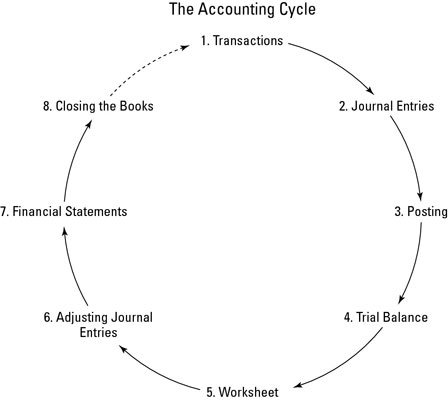After a transaction occurs and a source document is generated, the transaction is analyzed and entries are made in the general journal. A journal is a chronological listing of the firm's transactions, including the amounts, accounts that are affected, and in which direction the accounts are affected. A journal entry takes the following format:
Format of a General Journal Entry
| Date | Accounts | Debit | Credit |
| mm/dd | account to be debited | xxxx.xx | |
| account to be credited | xxxx.xx |
In addition to this information, a journal entry may include a short notation that describes the transaction. There also may be a column for a reference number so that the transaction can be tracked through the accounting system.



